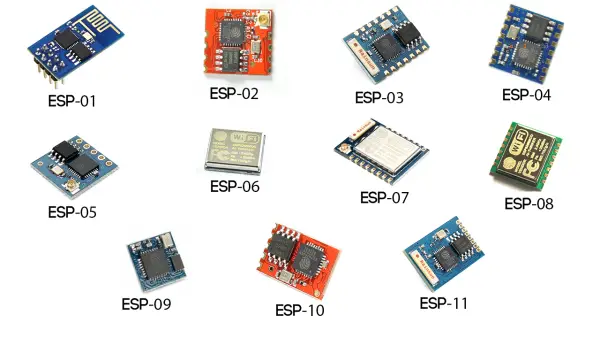What is WIFI module?
Are you are planning to control any device through your smartphone? What is a wifi module and how it works with IOT? Do you want to convert you smartphone as a multipurpose wireless switch? Then this is the right article for you to get started.
Wifi or wireless is most trending and highly used technology across the world. From television to mobile and from AC’s to home appliances, all are almost equipped with wifi or wireless technology.
These modules vary from different size, configuration protocols etc. In this article we will talk about a cost effective wifi module which is used for these kind of projects.
What is wifi module and which are cost effective modules?
You might have heard about ESP wifi module. This is quite famous among electronics hobbyist and enthusiasts. ESP8266 module is easily available online. For beginners who want to start with wifi based project can choose this module. This article will give you a overview about the ESP8266 Wifi module.
There are many types of ESP8266 module available in the market. It ranges from 01 to 14. There are some development boards available as well which are named as NodeMCU.
Must Read :
The ESP8266 is a cost effective Wi-Fi chip with full TCP/IP stack. It also contains a MCU (Micro Controller Unit). This Module has an independent SOC. It comes with an AT command set firmware. This provides an feasibility to connect with Arduino.
Its an exceptionally viable for IOT based activities. This module has a sufficiently intense on-board handling and capacity ability that enables it to be coordinated with the sensors and other application particular gadgets through its GPIOs.
ESP8266 accompanies 1 MB of implicit blaze, taking into consideration single-chip gadgets equipped for interfacing with Wi-Fi.
There are different AT commands available for these modules. You can get these here ESP8266 AT COMMANDS.
Comparison of different ESP8266 modules
| Board ID | #Pins | Pitch | Form factor | LEDs | Antenna | Dimensions mm | Flash Size |
| ESP-01 | 8 | 0.1“ | 2×4 DIL | Yes | Etched-on PCB | 14.3 x 24.8 | 512KB (4Mb) |
| ESP-02 | 8 | 0.1” | 2×4 notch | No | None | 14.2 x 14.2 | 512KB (4Mb) |
| ESP-03 | 14 | 2mm | 2×7 notch | No | Ceramic | 17.3 x 12.1 | 512KB (4Mb) |
| ESP-04 | 14 | 2mm | 2×4 notch | No | None | 14.7 x 12.1 | 512KB (4Mb) |
| ESP-05 | 5 | 0.1“ | 1×5 SIL | No | None | 14.2 x 14.2 | 512KB (4Mb) |
| ESP-06 | 12+GND | misc | 4×3 dice | No | None | 16.3 x 13.1 | 512KB (4Mb) |
| ESP-07 | 16 | 2mm | 2×8 pinhole | Yes | Ceramic | 21.2 x 16.0 | 1MB (8Mb) |
| ESP-07S | 16 | 2mm | 2×8 pinhole | No | None | 17.0 x 16.0 | 4MB (32Mb) |
| ESP-08 | 14 | 2mm | 2×7 notch | No | None | 17.0 x 16.0 | * |
| ESP-08 New | 16 | 2mm | 2×8 notch | No | None | 18.0 x 16.0 | * |
| ESP-09 | 12+GND | misc | 4×3 dice | No | None | 10.0 x 10.0 | 1MB (8Mb) |
| ESP-10 | 5 | 2mm ?? | 1×5 notch | No | None | 14.2 x 10.0 | 512KB (4Mb) |
| ESP-11 | 8 | 1.27mm | 1×8 pinhole | No | Ceramic | 17.3 x 12.1 | 512KB (4Mb) |
| ESP-12 | 16 | 2mm | 2×8 notch | Yes | Etched-on PCB | 24.0 x 16.0 | 4MB (32Mb) |
| ESP-12F | 22 | 2mm | 2×8 notch | Yes | Etched-on PCB | 24.0 x 16.0 | 4MB (32Mb) |
| ESP-12E | 22 | 2mm | 2×8 notch | Yes | Etched-on PCB | 24.0 x 16.0 | 4MB (32Mb) |
| ESP-12S | 16 | 2mm | 2×8 notch | Yes | Etched-on PCB | 24.0 x 16.0 | 4MB (32Mb) |
| ESP-13 | 18 | 1.5mm | 2×9 | Etched-on PCB | 20.0 x 19.9 | 4MB (32Mb) | |
| ESP-14 | 22 | 2mm | 2×8 + 6 | 1 | Etched-on PCB | 24.3 x 16.2 | * |

These modules are one of the top selling modules in the market. They are easy to configure and interface with different development boards.
